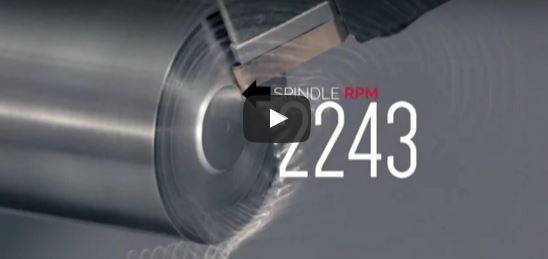Video: Chatter Control in Spindle Speed Variation
Instead of running at a consistent speed, a CNC parameter enables the lathe’s spindle speed to automatically cycle up and down through a range. The process, therefore, spends only an instant at any problematic speed.
Share





Chatter is self-excited vibration. We often think of controlling chatter as a challenge that relates to milling. However, chatter can be a factor in turning, too. This video from Haas Automation describes “Spindle Speed Variation,” a parameter in the company’s CNC that addresses chatter on lathes.
As the name implies, this parameter allows the lathe spindle speed to automatically vary. The user sets the speed variation envelope (say, ±100 rpm) along with the period of time for cycling through this range (in increments of 0.1 second). In the video, a lathe running at 2,000 rpm ±100 rpm is seen under a strobe light. The strobe picks up the speed variation, making it look as though the spindle is rocking back and forth.
This solution works to overcome chatter because chatter is speed-specific. Certain spindle speed values resonate with the overall machining system. Varying the rpm potentially stabilizes the cut because it means that the lathe spends only an instant at a time at any problematic speed.
The video illustrates the impact by showing the turning of a long bar, unsupported by a tailstock. The bar chatters when turned at consist speed, but then can be turned precisely and quietly once the variable speed is turned on.

Related Content
-
Inverting Turning and Five-Axis Milling at Famar
Automation is only the tip of the iceberg for Famar, which also provides multitasking options for its vertical lathes and horizontal five-axis machine tools.
-
Industry Analysis: Machining Semiconductor Components
With many machine shops anticipating long-term growth in demand from the semiconductor industry, it is worth the time to heed the advice of manufacturers who have already been servicing this end-market for years.
-
Quick-Change Tool Heads Reduce Setup on Swiss-Type Turning Centers
This new quick-change tooling system enables shops to get more production from their Swiss turning centers through reduced tool setup time and matches the performance of a solid tool.






















